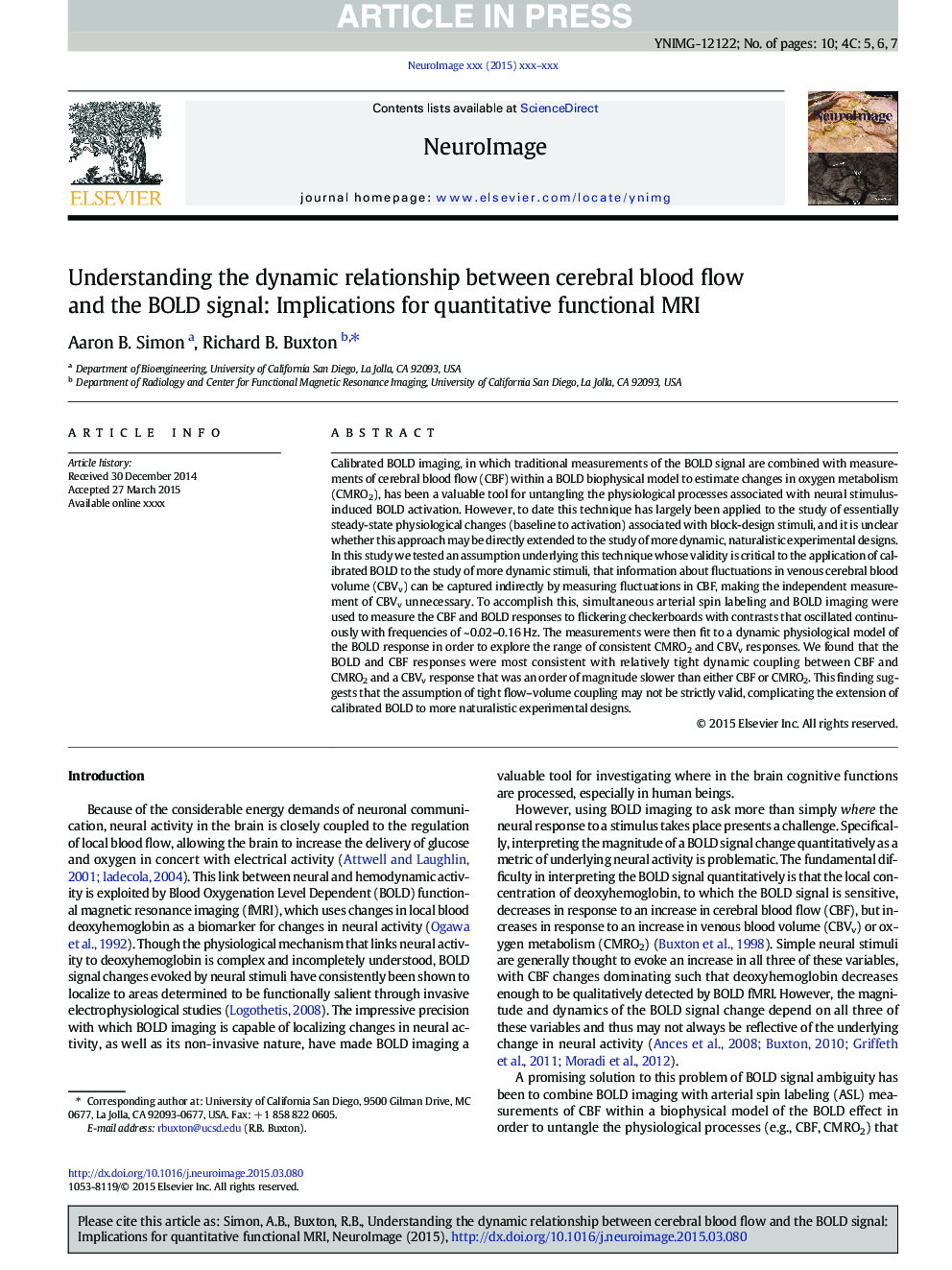| Article ID | Journal | Published Year | Pages | File Type |
|---|---|---|---|---|
| 6024898 | NeuroImage | 2015 | 10 Pages |
Abstract
Calibrated BOLD imaging, in which traditional measurements of the BOLD signal are combined with measurements of cerebral blood flow (CBF) within a BOLD biophysical model to estimate changes in oxygen metabolism (CMRO2), has been a valuable tool for untangling the physiological processes associated with neural stimulus-induced BOLD activation. However, to date this technique has largely been applied to the study of essentially steady-state physiological changes (baseline to activation) associated with block-design stimuli, and it is unclear whether this approach may be directly extended to the study of more dynamic, naturalistic experimental designs. In this study we tested an assumption underlying this technique whose validity is critical to the application of calibrated BOLD to the study of more dynamic stimuli, that information about fluctuations in venous cerebral blood volume (CBVv) can be captured indirectly by measuring fluctuations in CBF, making the independent measurement of CBVv unnecessary. To accomplish this, simultaneous arterial spin labeling and BOLD imaging were used to measure the CBF and BOLD responses to flickering checkerboards with contrasts that oscillated continuously with frequencies of ~Â 0.02-0.16Â Hz. The measurements were then fit to a dynamic physiological model of the BOLD response in order to explore the range of consistent CMRO2 and CBVv responses. We found that the BOLD and CBF responses were most consistent with relatively tight dynamic coupling between CBF and CMRO2 and a CBVv response that was an order of magnitude slower than either CBF or CMRO2. This finding suggests that the assumption of tight flow-volume coupling may not be strictly valid, complicating the extension of calibrated BOLD to more naturalistic experimental designs.
Related Topics
Life Sciences
Neuroscience
Cognitive Neuroscience
Authors
Aaron B. Simon, Richard B. Buxton,
